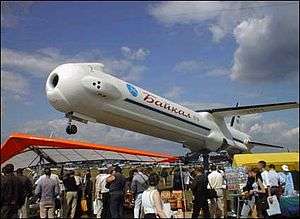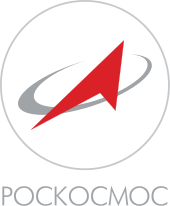Baikal (rocket booster)

The Baikal booster (russ. Байкал) was a proposed reusable flyback booster for the Angara rocket family based on the Angara Universal Rocket Module in 2001. It was designed by the Molniya Research and Industrial Corporation (NPO Molniya) for the Khrunichev Space centre, reusing the flyback and control system for the reusable Buran orbiter.
Description
The booster would be equipped with an RD-191 rocket engine burning kerosene and liquid oxygen to provide approximately 200 tons of thrust. In addition, it would be equipped with a folding wing stored parallel to the fuselage of the vehicle during the booster stage of the flight. After separation from the Angara launcher's second stage at an altitude of about 75 kilometers and a speed of Mach 5.6 (3,600 mph; 5,800 km/h), the Baikal's wing would rotate 90 degrees and the booster glides in upside down position reducing speed. Once the booster reaches subsonic speeds a U turn is performed and an air-breathing RD-33 jet engine in its nose section is started to fly back to its launching site and make a powered horizontal landing on a runway. Apart from economic advantages, this procedure greatly reduces the risk of falling space debris. Reducing this risk was important as the Angara rockets will be launched from the deep inland Plesetsk Cosmodrome.
Mock-up
A full-size engineering mock-up of the Baikal was exhibited at the Paris Air Show in July 2001. Similar mockups were tested in wind tunnels of the Central Aero- and Hydrodynamics Institute TsAGI, at speeds of 0.5 - 10 Mach. However, according to unofficial statements by Khrunichev Center representatives, there would have been a long development program to the production of models for captive tests, and the mock-up demonstrated at Le Bourget differs greatly in appearance and design from the Baikal that will actually be launched.
See also
References
- Kirilov, Vladimir (2010). "Baikal Reusable Booster". Moscow Defense Brief. Centre for Analysis of Strategies and Technologies. #1(19). Retrieved 1 March 2010.
- Zak, Anatoly (30 April 2008). "Baikal Booster Stage". RussianSpaceWeb.com. Archived from the original on 2 October 2009. Retrieved 1 March 2010.
- "Baikal reusable launch vehicle". Khrunichev. Retrieved 24 August 2010.
